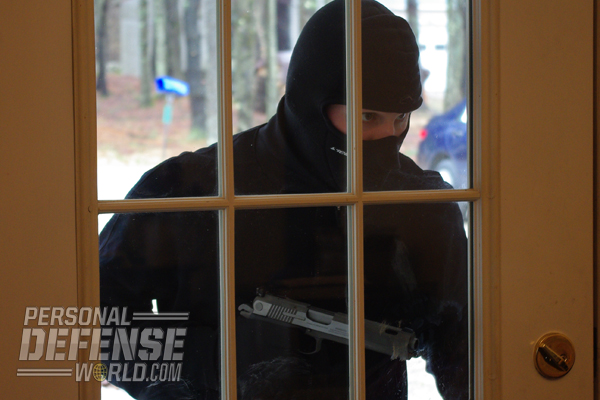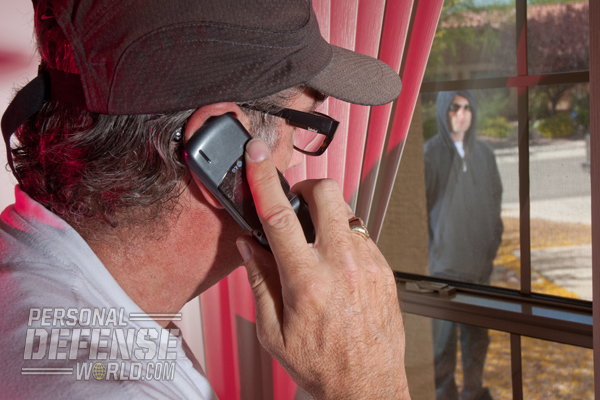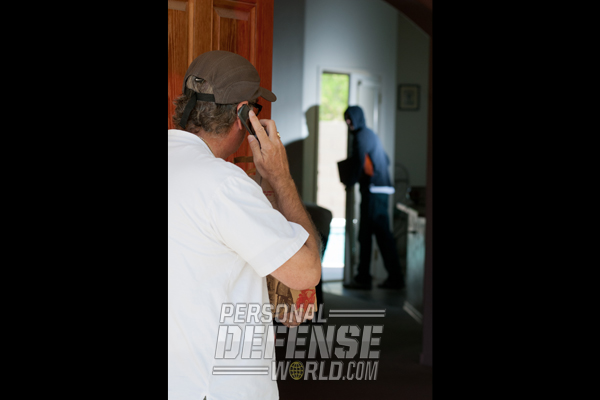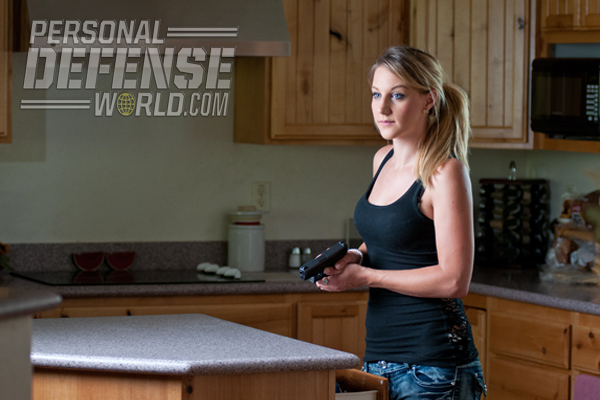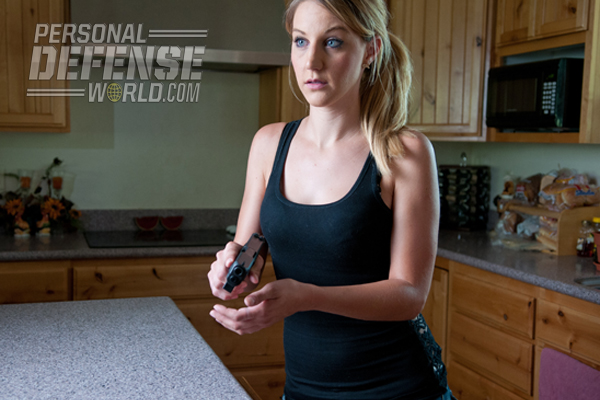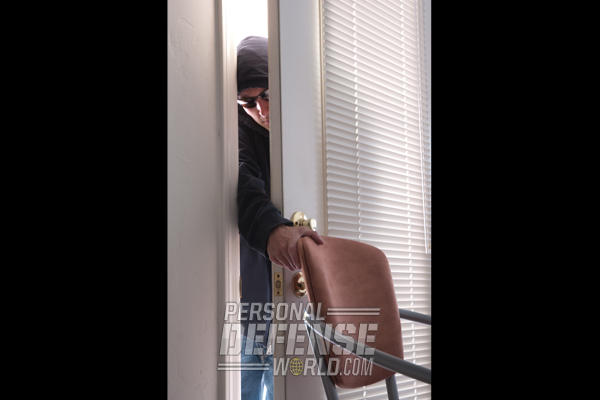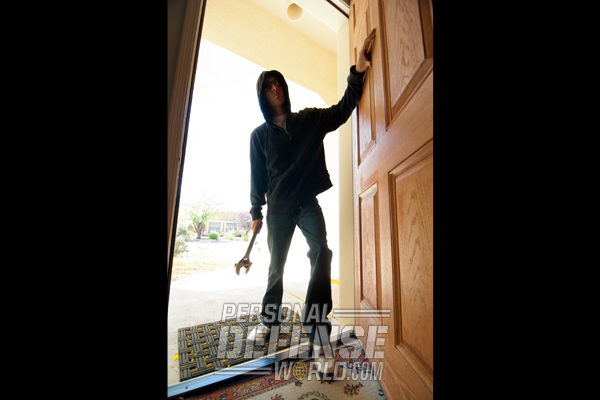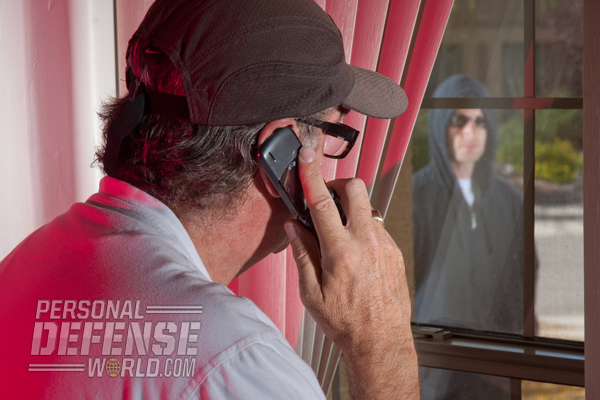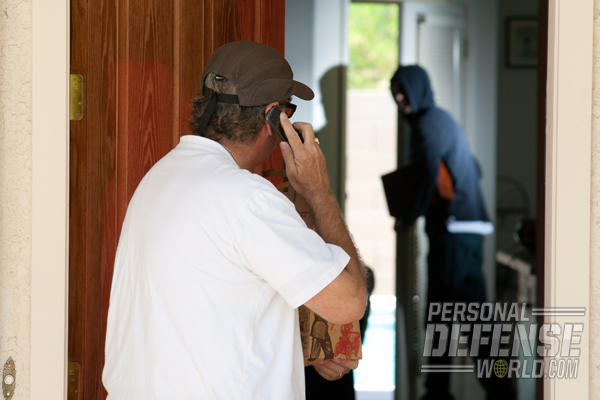Nighttime break-ins of occupied dwellings are one of the most dangerous crimes. However, it is important not to underestimate the potential dangers of a daytime home invasion.
Scenario One: Something Suspicious
In this scenario, you, upon entering your domicile immediately suspect someone has broken in or observe real signs of a break-in. Here your best course of action is to quickly retreat outside and call the police. Even if you’re legally armed you should refrain from entering your home. Your job is to find assistance and serve as witness until the police or sheriff’s deputies arrive. Besides, if the intruder has heard you entering the home or calling 9-1-1, he or she may flee the scene. Before the police enter your home, advise them of any loaded or unloaded firearms in your residence, particularly if any are not secured in a safe or in a locked box. If the intruder is still inside, this information can save the officers’ lives. Remember that properly securing your firearms prevents them from falling into the wrong hands.
Advertisement — Continue Reading Below
Scenario Two: Surprise Meeting
The second scenario involves you entering your home and stumbling upon an intruder rummaging through your personal possessions. This scenario can become even worse if the intruder attacks you. In this case, you are always better off immediately leaving your home rather than entering into a confrontation with the intruder. Naturally, if you are attacked you must defend yourself using whatever level of force is justified under the law, including using your legal firearm. This also applies to situations where you are already inside your home and a criminal subsequently enters through a door, window or garage.
Advertisement — Continue Reading Below
Scenario Three: Family Members
One particularly complex scenario involves an intruder entering the home while your spouse is home alone or with small children. A more serious variant of this is when children are home either alone or without adult supervision.
Advertisement — Continue Reading Below
If you return home and observe signs of a break-in while your spouse or children are home but neither visible nor verbally responsive, immediately call 9-1-1 and tell the dispatcher why you suspect an intruder and what your concerns are for the safety of your family members. Remain in constant contact with the dispatcher while you await the police. If you hear a family member screaming or calling for help, you’ll likely be compelled to immediately take aggressive action. In this situation you should (as trained individuals do) inform the dispatcher of what’s happening and of whether you are taking action. If you decide to enter your house to rescue those in distress, describe yourself to the dispatcher and indicate whether you’re armed. Doing so can prevent a friendly-fire incident. Still, never have a weapon in your hand when the local police arrive.
Tactical Mindset
Advertisement — Continue Reading Below
Daytime burglaries are not a new occurrence. They take place in every type of neighborhood. In fact, even in states where CCW licenses are easy to obtain and large numbers of citizens have at least one firearm in their home, some very brazen thieves will still break into your home during the day. If they’re crazy enough to take that risk, what are they capable of doing in places with stricter gun laws?
In order to respond appropriately to encounters with armed or unarmed criminals you must adopt a tactical mindset. You can accomplish this by being aware of your surroundings whether you are walking into a dark parking garage or when entering your home in broad daylight: Remember, you may be confronted by a criminal at any time. If living with this proactive mindset upsets you, consider how upset you’ll be when faced with an intruder, especially one who means you harm. Being prepared to face danger is the only way you can avoid being so startled that you lose the tactical advantage to the intruder.
“Someone who looks harmless, is just asking for directions or is claiming to be a business solicitor can actually be a deadly threat…”
The two best ways to develop a tactical mindset is through specialized training and actual field experience. Law enforcement officers, military personnel and armed security personnel are often required to complete a variety of tactical training such as the use of lethal and nonlethal weapons. People working as armed professionals also gain valuable experience in dealing with criminals and combatants in the field.
Advertisement — Continue Reading Below
In contrast, the average citizen will have to obtain their tactical training through private sources. And you will not receive the same type of extensive training that law enforcement officers and other armed professionals receive, nor can you expect to gain their same experience in dealing with violent and nonviolent individuals. I mention this to caution you about taking “enforcement action” when you are not specially trained or capable of doing so. But the bottom line is that proper training can give you the confidence and the necessary skills to ensure success whenever you go tactical.
There are three basic ways to protect yourself and your family from a home invasion. One method is to be armed at all times if you are legally able to carry a concealed firearm. The second and more popular method is to position one or more firearms in different locations throughout your home. But even if you are well trained, being armed at all times or having access to a firearm does not guarantee you’ll win in a confrontation. Clearly, the best defense (the third method) is to prevent armed intruders from entering your home under any circumstances.
This is why I suggest living in a properly secured home. This means never opening any door for anyone that seems suspicious, even if that person is representing themselves as a law enforcement officer. In the event you believe you’ve encountered someone who is impersonating a police officer, keep your door locked, immediately call 9-1-1 and await police (Look for a marked car.) Real law enforcement officers will respect your concern. Someone who looks harmless, is just asking for directions or is claiming to be a business solicitor can actually be a deadly threat.
Advertisement — Continue Reading Below

